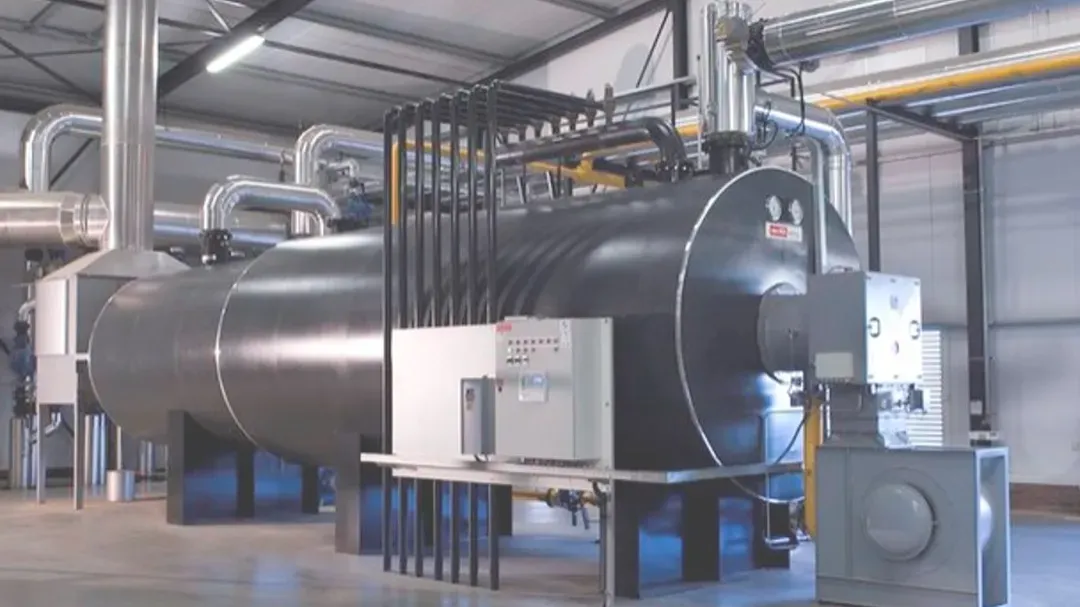What is a Boiler?
A boiler is a closed pressure vessel exceeding 22.75 liters, used to generate steam under pressure. It includes all mountings or fittings attached to it and is governed in India by the Indian Boiler Act, 1923 and IBR (Indian Boiler Regulations).
Boilers are essential in:
- Food and beverage plants
- Chemical industries
- Pharmaceuticals
- Power generation units
A boiler is not the same as a pressure vessel; its primary function is steam generation, unlike vessels used for storage or reaction.
Types of Industrial Boilers
Fire Tube Boiler
- Hot combustion gases pass through tubes surrounded by water
- Used in low to medium-pressure applications
- Common in small to mid-sized food industries
Key Components:
- Fire tubes
- Combustion chamber
- Baffles for heat flow
- Steam dome
- Safety valves & gauges
Applications:
- Central heating
- Dairy and brewing
- Hot water supply systems
Water Tube Boiler
- Water circulates inside tubes, heated by external combustion gases
- Used in high-pressure, high-capacity operations
- Ideal for power plants, large-scale food factories
Advantages:
- Faster steam generation
- Higher thermal efficiency
- Safer under high pressure
Fuel Types Used in Boilers

Fuel choice affects operational cost, emissions, and boiler maintenance. A food consultant ensures fuel-to-steam efficiency aligns with sustainability goals.
Types of Treated Water in Boilers
1. Softened Water
Removes calcium/magnesium via ion exchange—prevents scaling.
2. Demineralized (DM) Water
Removes all dissolved minerals. Used in high-pressure boilers.
3. Deionized (DI) Water
Ultra-pure water, free from all ions—suitable for pharma and electronics-grade steam systems.
4. Condensate Return
Recycled steam condensate—energy-saving, must be treated to remove contaminants.
5. Chemically Treated Water
Controlled with pH regulators, scale inhibitors, oxygen scavengers.
Food processing consultants implement SOPs and monitoring protocols to ensure feedwater consistency, boiler safety, and regulatory compliance.
Environmental Control Devices in Boiler Systems
NOx Reduction
- Selective Catalytic Reduction (SCR)
- Selective Non-Catalytic Reduction (SNCR)
SO₂ Removal
- Flue Gas Desulfurization (FGD) using lime or limestone scrubbers
Particulate Control
- Electrostatic Precipitators (ESPs)
- Fabric Filter Bag Houses
Combustion Optimization
- Flue Gas Recirculation (FGR)
- Low-NOx burners
- Air-fuel ratio tuning
Heat Recovery Systems
- Boiler economizers, waste heat boilers to preheat feedwater
Continuous Emission Monitoring (CEMS)
- Real-time tracking of NOx, SO₂, CO, O₂, etc. for regulatory audits
Regulatory Overview (India)
- Governed by the Indian Boiler Act 1923
- Requires registration, annual inspections, and compliance with IBR
- Emission limits as per CPCB and State Pollution Control Boards
- Water quality under BIS 10400: Drinking and Process Water
Conclusion: Boilers Are the Heart of Industrial Energy Systems
Boiler selection, water treatment, fuel choice, and emission control define the efficiency, safety, and compliance of an industrial utility system. Especially in food processing, steam quality impacts:
- Product safety
- Energy cost
- Environmental footprint
Partner with a professional food processing consultant to:
- Design boiler and utility layouts
- Select fuel and water treatment systems
- Implement emission reduction solutions
- Create SOPs and training programs for plant personnel
 PMG stands for Projects Management Group. We provide state-of-the-art Engineering Services to build world-class food processing factories.
PMG stands for Projects Management Group. We provide state-of-the-art Engineering Services to build world-class food processing factories.  Engineering is the difference between Chaos and Excellence. If you are going to do it, do it right.
Engineering is the difference between Chaos and Excellence. If you are going to do it, do it right.  Explore the diverse range of Products in the Food Processing Industry.
Explore the diverse range of Products in the Food Processing Industry.  Explore the technologies at the heart of the the Food Processing Industry.
Explore the technologies at the heart of the the Food Processing Industry. 


 Back
Back 



